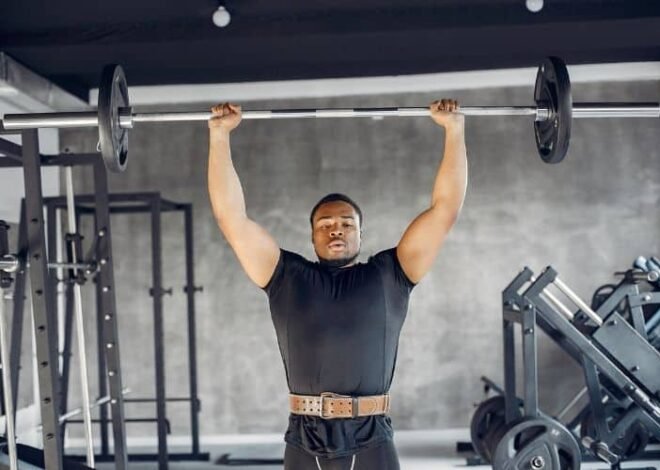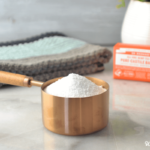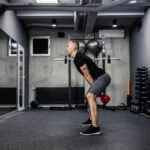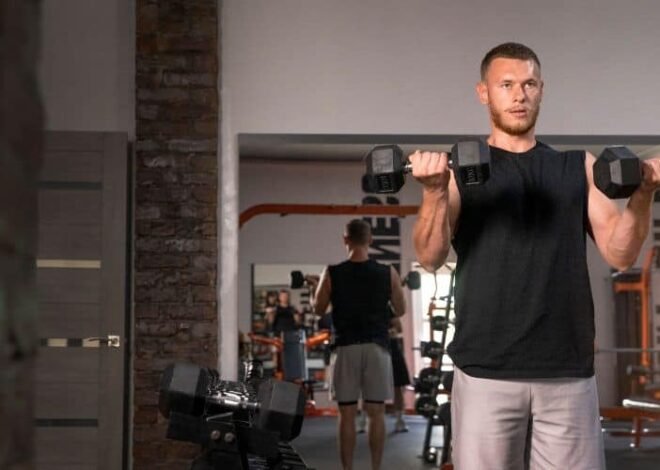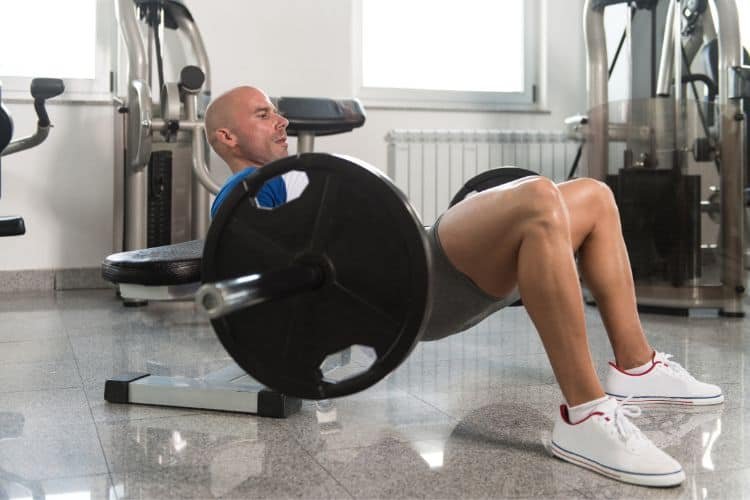
Barbell Glute Bridges Workouts The Ultimate Guide
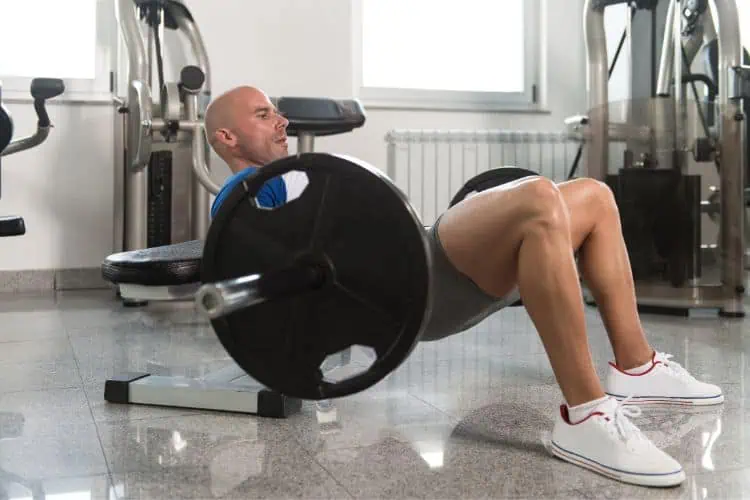
Glute bridges are a staple in fitness routines, but when you add a barbell to the mix, the benefits amplify dramatically. Barbell glute bridges are a powerhouse exercise for building strength, improving athletic performance, and sculpting the lower body. In this comprehensive guide, we delve into everything you need to know about barbell glute bridges: their benefits, how to perform them, variations, and tips for optimal results.
What Are Barbell Glute Bridges?
Barbell glute bridges are a lower-body exercise that targets the gluteal muscles while engaging the hamstrings, lower back, and core. This movement involves lying on your back with your shoulders on the ground and your knees bent, placing a barbell across your hips, and thrusting your hips upward. The barbell adds resistance, making the exercise more challenging and effective for muscle growth and strength development.
Benefits of Barbell Glute Bridges
1. Enhanced Glute Strength
The primary benefit of barbell glute bridges is their ability to isolate and strengthen the glutes. Strong glutes contribute to better athletic performance, improved posture, and reduced risk of lower back pain.
2. Improved Hip Thrust Power
Barbell glute bridges train the hip thrust motion, which is critical in activities like sprinting, jumping, and lifting. This exercise enhances your explosive power, translating to better performance in sports and functional activities.
3. Versatility for All Fitness Levels
Whether you’re a beginner or an advanced lifter, barbell glute bridges can be adapted to suit your fitness level. Adjusting the weight and range of motion allows for scalable progress.
4. Reduced Risk of Injury
Strengthening the glutes helps stabilize the pelvis and support the lower back, reducing the likelihood of injuries during other exercises or daily movements.
How to Perform Barbell Glute Bridges Correctly
Step-by-Step Guide
- Setup: Start by sitting on the ground with your back against a bench and a loaded barbell in front of you. Roll the barbell over your legs until it rests above your hips. Use a barbell pad or a towel for comfort.
- Positioning: Place your feet flat on the ground, hip-width apart, with your knees bent at a 90-degree angle. Your upper back should rest on the edge of the bench.
- Engage Your Core: Tighten your core and glutes before lifting.
- Lift: Drive through your heels to lift your hips toward the ceiling, ensuring your body forms a straight line from your shoulders to your knees. Avoid overarching your lower back.
- Squeeze: At the top of the movement, squeeze your glutes and hold for 1-2 seconds.
- Lower: Slowly lower your hips back to the starting position, maintaining control throughout.
Common Mistakes to Avoid
- Arching the Lower Back: Keep your core engaged to prevent unnecessary strain on the lower back.
- Incorrect Bar Placement: Ensure the bar rests comfortably on your hips, not your stomach.
- Lifting with the Back: Focus on using your glutes and hamstrings to drive the motion.
Variations of Barbell Glute Bridges
1. Single-Leg Barbell Glute Bridge
This variation increases the intensity by isolating each leg. Perform the exercise with one leg raised, ensuring even glute development.
2. Elevated Barbell Glute Bridge
Place your feet on an elevated surface to increase the range of motion and challenge your glutes further.
3. Resistance Band Barbell Glute Bridge
Add a resistance band around your thighs to activate the glute medius and improve hip stability.
4. Barbell Hip Thrust
A close cousin to the glute bridge, the hip thrust involves a similar movement but with a bench supporting your upper back, allowing for a deeper range of motion.
Programming Barbell Glute Bridges
For Beginners
- Sets and Reps: Start with 3 sets of 10-12 reps using light to moderate weight.
- Frequency: Perform the exercise 2-3 times per week.
Intermediate Lifters
- Sets and Reps: Progress to 4 sets of 8-10 reps with heavier weight.
- Frequency: Include barbell glute bridges in your routine 3-4 times weekly.
Advanced Lifters
- Sets and Reps: Perform 5 sets of 6-8 reps with challenging weight.
- Frequency: Add variations like single-leg or elevated bridges for diversity and increased difficulty.
Complementary Exercises for Glute Development
1. Squats
Squats are a compound movement that engages the glutes, quads, and hamstrings. Combine them with barbell glute bridges for a comprehensive lower-body workout.
2. Deadlifts
Deadlifts target the posterior chain, including the glutes, hamstrings, and lower back, complementing the activation provided by glute bridges.
3. Lunges
Lunges add dynamic movement to your routine, enhancing glute strength and improving balance and coordination.
4. Step-Ups
This unilateral exercise focuses on one leg at a time, ensuring balanced glute development.
Tips for Maximizing Results
1. Prioritize Form Over Weight
While it’s tempting to load the bar with heavy weights, proper form should always come first to avoid injuries and maximize muscle activation.
2. Warm Up Effectively
Incorporate dynamic stretches and activation exercises like bodyweight glute bridges to prepare your muscles for the workout.
3. Increase Intensity Gradually
Progressive overload is key to building strength. Gradually increase the weight, sets, or reps over time.
4. Incorporate Recovery
Allow adequate rest between sessions to let your muscles recover and grow. Use techniques like foam rolling and stretching to alleviate tightness.
Frequently Asked Questions
Q: Can barbell glute bridges replace squats?
A: While barbell glute bridges are excellent for targeting the glutes, they don’t provide the same full-body activation as squats. Both exercises have unique benefits and should ideally complement each other in a balanced workout program.
Q: Are barbell glute bridges suitable for beginners?
A: Absolutely! Beginners can start with bodyweight glute bridges and gradually add weight as they build strength and confidence.
Q: How heavy should the barbell be?
A: The weight depends on your fitness level and goals. Start with a manageable weight that allows you to maintain proper form throughout the exercise.
Q: Can barbell glute bridges help with lower back pain?
A: Strengthening the glutes through exercises like BGB can alleviate lower back pain by improving pelvic stability and reducing strain on the lumbar spine.
Final Thoughts
Barbell glute bridges are a versatile and highly effective exercise for building strong, sculpted glutes. Whether you’re a beginner or an experienced lifter, incorporating this movement into your workout routine can enhance your strength, athletic performance, and aesthetics. By mastering the technique, experimenting with variations, and following a structured program, you can unlock the full potential of this powerhouse exercise. Remember to stay consistent, prioritize recovery, and celebrate your progress along the way!
